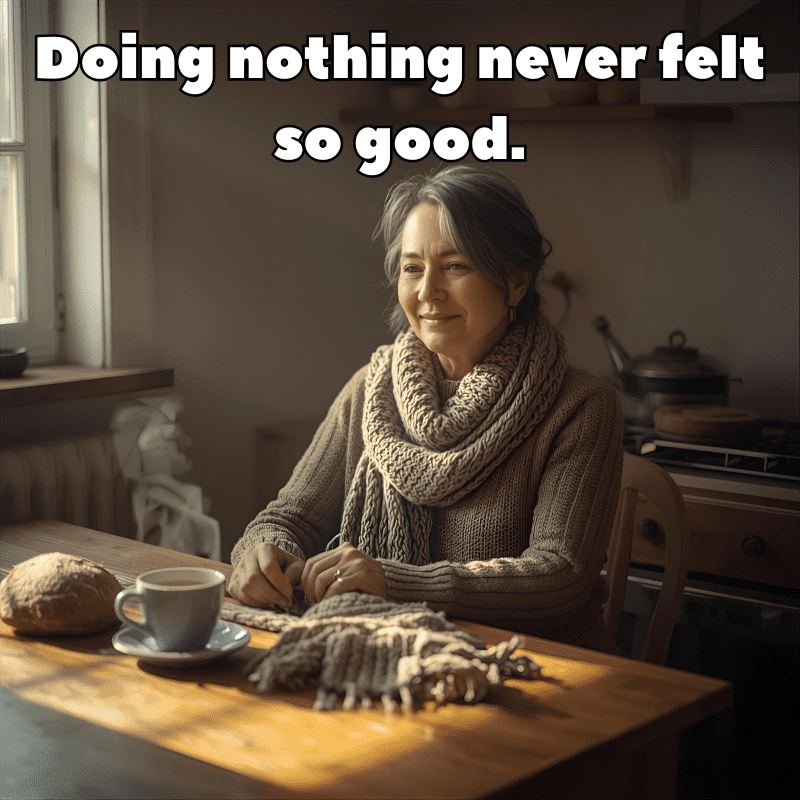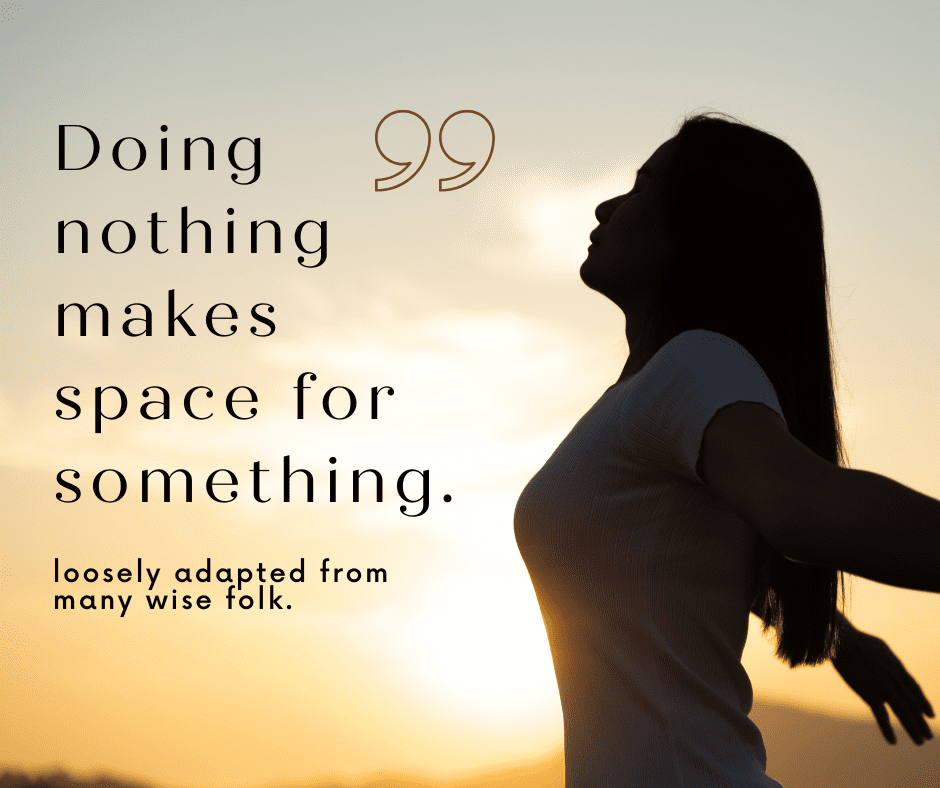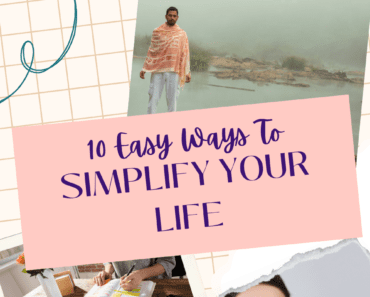Last Updated on November 4, 2025 by Christin
We live in a time that measures EVERYTHING. Productivity apps ping us. Calendars are packed. Hobbies sometimes feel like side-hustles disguised as “fun.” But I’ve found something counter-intuitive: doing something that seems useless — no obvious goal, no KPI, no grand ambition — might actually be one of the smartest moves you can make. Here’s why.
The Cult of Constant Usefulness
We’re taught from early on that time must yield something. You “should” be learning, upgrading, optimizing, networking, growing. But somewhere in the noise I found that the fiercest productivity trap is the one that turns everything — even rest and play — into another task.
I don’t mean laziness. I mean choosing an activity purely for itself: kneading dough, painting a rock, planting a pot of herbs, knitting a scarf you’ll never wear, or simply letting your mind drift. On the surface: “useless.” Under the surface: a surprisingly fertile ground for rest, creativity and emotional renewal.
The Psychology of Pointless Pleasure

Here’s the science bit — but not the over-fancy kind.
- A 2023 study of 93,000+ older adults found people who reported regular hobbies had better health, more happiness, fewer depressive symptoms and higher life satisfaction, across many countries. – Harvard Health
- Engaging in “enjoyable leisure activities” correlates with better psychological and physiological functioning (including lower cortisol, lower waist circumference) when people voluntarily choose activities just for pleasure. – PubMed
- Even activities often dismissed as idle — like daydreaming — have been shown to boost creativity and self-reflection rather than just “waste time” – Psychology Today
- There’s also an effect that when a task is entirely for yourself (no extrinsic reward, no visible aim) you tap into intrinsic motivation — the kind that sustains you when everything else is draining. (See the concept of the overjustification effect.) – Wikipedia
So, doing something that seems useless might be doing a lot of useful work beneath the radar: calming your nervous system, giving your brain space, fostering creative insight, and reconnecting you with yourself outside the hustle.
Grandma Was Onto Something
Think of knitting, baking, gardening. These weren’t just “cute hobbies” for grandmas: they were built into life. They weren’t monetised. They didn’t have to go viral. They were done because they made things feel alive, touched by your hands, slower, rooted.
When I started baking bread purely for pleasure, or planting herbs that I’d never sell, something changed: I felt calmer. My content-brain got a breather. My timeline of “what I should do” paused. I tapped into a rhythm that felt grounded.
It’s not about rejecting modern tools (you and I both live online). It’s about saying: maybe slower things more than hyper-efficient things. The messy dough rises. The plant roots slowly. The knitting needle loops. The value is in the act.
The Productivity Paradox
Here’s the paradox: when you stop chasing usefulness, you often become more useful.
Without the pressure of performance, your brain’s default mode (that quiet background hum) has space. Ideas percolate. Creativity happens in the “useless” moments.
You build emotional resilience. When you’re always performing you burn out. When you’re allowed to just play, you refill your tank.
You reconnect to intrinsic motivation. You’re doing something for its own sake again — which is often the fuel for long-term sustainable living.
You wake up from the autopilot. The ritual of a mundane, “non-productive” activity anchors you. Then, when you go back to your “serious” work (content creation, life strategy), you’re steadier.
So maybe the smartest thing isn’t doing more. It’s doing less goal-driven work. It’s letting yourself be human instead of “productive being.”

How to Reclaim Joy Without Purpose
Choose one “useless” activity this week just for fun. (Doesn’t have to be big.) Maybe you hand-write a note to yourself. Or bake a loaf of bread and then eat it while watching the sky.
No metrics. No “how many views”, “how many followers”, “how many hours”. Just: did I feel something?
Schedule it like you would a meeting. Because if you leave it to “whenever”, it won’t happen. Make it non-negotiable.
Reflect after. Not in terms of “result”, but “how did it make me feel?” Did my mind slow? Did my body relax?
Share the story — not for self-promotion, but for connection. You might build a post: “Here’s me baking for no reason” — your audience cares because you are real.
The Smartest Kind of Useless
We’ve been sold the idea that usefulness equals value. What if value sometimes lies in the unmeasurable? The felt, the quiet, the done-just-because. If you’ve ever felt the weight of “I should be doing something more”, maybe it’s time to let something just be.
So here’s my invitation to you: pick an activity that makes zero sense in the “growth-hustle” matrix, give it a go, and watch how your life might shift. The smartest move might just be the one you didn’t think needed a reason.
In a world obsessed with being useful, joy might be the most rebellious thing you can create.





